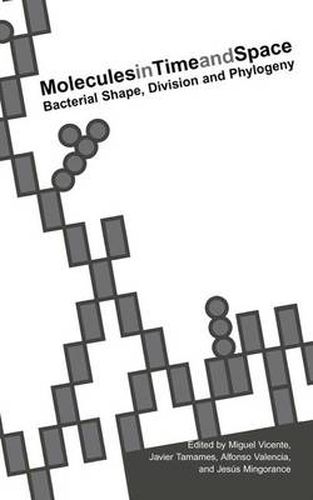Readings Newsletter
Become a Readings Member to make your shopping experience even easier.
Sign in or sign up for free!
You’re not far away from qualifying for FREE standard shipping within Australia
You’ve qualified for FREE standard shipping within Australia
The cart is loading…






This title is printed to order. This book may have been self-published. If so, we cannot guarantee the quality of the content. In the main most books will have gone through the editing process however some may not. We therefore suggest that you be aware of this before ordering this book. If in doubt check either the author or publisher’s details as we are unable to accept any returns unless they are faulty. Please contact us if you have any questions.
During the last decade a wealth of new data has arisen from the use of new fluorescent labelling techniques and the sequencing of whole microbial genomes. One important conclusion from these data is that bacterial cells are much more structured than previously thought. The wall and the outer membrane contain topological domains, some proteins localize or move in specific patterns inside the cells, and some genes appear clustered in the chromosome and form conserved evolutionary units. Many of these structures are related to the cell cycle and to the process of cell morphogenesis, two processes that are themselves related to each other. From these observations the dcw gene cluster appears as a phylogenetic trait that is mainly conserved in bacilli. Molecules in Time and Space reviews the data on the formation of subcellular patterns or structures in bacteria, presents observations and hypotheses on the establishment and the maintenance of cell shape, and on the organization of genetic information in the chromosome. Molecules in Time and Space will be of interest to microbiologists, especially those with an interest in the structure of the bacterial cell and bacterial genetics and genomics. Will also be of use to biochemists, biophysicists and bioinformaticians interested in bacterial cytoskeletal proteins.
$9.00 standard shipping within Australia
FREE standard shipping within Australia for orders over $100.00
Express & International shipping calculated at checkout
This title is printed to order. This book may have been self-published. If so, we cannot guarantee the quality of the content. In the main most books will have gone through the editing process however some may not. We therefore suggest that you be aware of this before ordering this book. If in doubt check either the author or publisher’s details as we are unable to accept any returns unless they are faulty. Please contact us if you have any questions.
During the last decade a wealth of new data has arisen from the use of new fluorescent labelling techniques and the sequencing of whole microbial genomes. One important conclusion from these data is that bacterial cells are much more structured than previously thought. The wall and the outer membrane contain topological domains, some proteins localize or move in specific patterns inside the cells, and some genes appear clustered in the chromosome and form conserved evolutionary units. Many of these structures are related to the cell cycle and to the process of cell morphogenesis, two processes that are themselves related to each other. From these observations the dcw gene cluster appears as a phylogenetic trait that is mainly conserved in bacilli. Molecules in Time and Space reviews the data on the formation of subcellular patterns or structures in bacteria, presents observations and hypotheses on the establishment and the maintenance of cell shape, and on the organization of genetic information in the chromosome. Molecules in Time and Space will be of interest to microbiologists, especially those with an interest in the structure of the bacterial cell and bacterial genetics and genomics. Will also be of use to biochemists, biophysicists and bioinformaticians interested in bacterial cytoskeletal proteins.